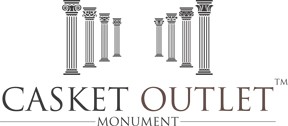No products
Product successfully added to quote!
Need Help?
Faq categories
Cleaning and Preservation of Tombstones, Headstones & Gravestones
Did you recently visit the grave of a loved one only to discover their tombstone was dirty and in need of cleaning or preservation? Over a period of time tombstones will accumulate a layer of deposits resulting from hard water, dust, dirt, lichens, mold or fungus that usually grow on porous stone.
Due to the different types of materials used as a tombstones, it is first important to understand how each material needs to be cleaned. This article will serve as an overview to the general aspects of cleaning tombstones and will reference other publications for further reading.
Materials Used For Cleaning Tombstones
First let us look at the different materials used to make tombstones. Natural stone throughout history has been the top choice for cemetery tombstones. Among the most common types of stone used as tombstones are sandstone, limestone, marble and granite.
Limestone and sandstone represent the softest stone of the group. These materials have a hardness between 3-4 on the Mohs hardness scale and were used as tombstones mainly because they are easy to carve. Marble having a hardness of 4-7 is also considered soft, but it yields more beauty with it's veining patterns and finer grain which can support intricately carved details. Granite is the hardest of this group and it shows with a hardness rating of 7-9. Granite tombstones will withstand a more thorough cleaning than its counterparts.
In addition to natural stone, bronze has been gaining in popularity with modern day memorial parks as a choice for tombstones. Many of today's cemeteries are moving toward an all bronze memorial park since they make the grounds easier to maintain.
Headstone Cleaning Tools and Methods
Before cleaning a tombstone you must first get permission from the lot owner or next of kin, that is if you are not a relative of the person interred. Also tombstones that are to be cleaned need to be evaluated to make certain they are in stable condition with no flaking or risk of further deterioration from the cleaning process.
Limestone, Sandstone & Marble Tombstones
For cleaning the tombstones made of soft natural stone in this group, here is a list of generally accepted items to use:
- Plenty of water
- Buckets
- Natural bristle brushes/tooth brushes
- Non-ionic soaps/detergents
- TLC (tender loving care)
Here are some items you DO NOT want to use when cleaning tombstones as they may cause irreparable damage to the tombstone you are trying to preserve:
- Wire bristled brushes or metal instruments
- Acid or acidic cleaners
- Household cleaners - soap (Ivory), detergents (liquid or powder), Borax, Clorox, TSP, Calgon, Fantastik, Formula 409, Spic and Span (or any other abrasive cleaner)
Pressure washers
- Sealants of any kind
Rather than trying to "reinvent the wheel" we suggest referring to these articles as they provide in depth information on cleaning tombstones made from natural stone. Cleaning Gravestones, Monuments & Stone Sculptures Preserving Historic Cemeteries - Texas Preservation Guidelines
Granite Tombstones
When cleaning granite tombstones it is best to follow the same prescription for cleaning limestone, sandstone or marble tombstones. Additionally, due to granite's durability, it is all right to use a more aggressive scrubbing technique. You can also use a pressure washer on granite tombstones as long as it is in stable condition and reveals no fracturing or cracks.
A word of caution, when using a pressure washer be careful if the tombstone's carving or engraved areas have any kind of coloring in it such as black. The pressure washer can and will strip it out leaving little or no contrast for the viewer to read the lettering on the tombstone. Taking this into consideration it is best to use a pressure washer only on granite tombstones that have no contrasting paint in the engraved areas.
On polished granite tombstones, calcium deposits from hardened water often leave a hazed coating on the polished surface. It is recommended to use a cuttle bone to remove these calcium deposits. You can also purchase cuttle bone from a pet store as they are commonly stocked for caged birds. They are very inexpensive and it would be advised to purchase several. To use, simply make contact with the flat side of the cuttle bone to the polished stone surface and rub it in a back and forth motion. The cuttle bone acts as a very mild abrasive removing the deposits while polishing surface of the stone.
Bronze Tombstones
Bronze Tombstones consist of a bronze plaque mounted to a base usually of granite or concrete and lay flat at lawn level. As a result of being mounted flat, bronze tombstones are more susceptible to standing water and landing debris.
Since bronze tombstones consist of two components you can utilize the cleaning method for cleaning soft stone for a concrete base, and the polished granite method for cleaning the granite base.
The bronze plaque is furnished with a factory applied lacquer coating to seal and preserve the original appearance. Over a period of time this finish will eventually deteriorate and is accelerated through neglect. Proper care will preserve the finish and prevent the need for restoration.
Here is a good manual titled "Preserving Bronze Plaques And Memorials ". It provides all the instructions you need as well as a list of supplies. You can also purchase the preservation kit with the necessary supplies or just the wax here.
Environmentally Friendly Tombstone Cleaning
For those of you who are interested in a more environmentally friendly approach to cleaning tombstones, there is a rather unusual method of using snails. That's right... snails. Snails are known to consume lichens, mold, fungus and algae. Many of these growths are what causes tombstones to become 'dirty' and in need of a cleaning. You can read the full article here: " A Unique Method For Cleaning Headstones ".































